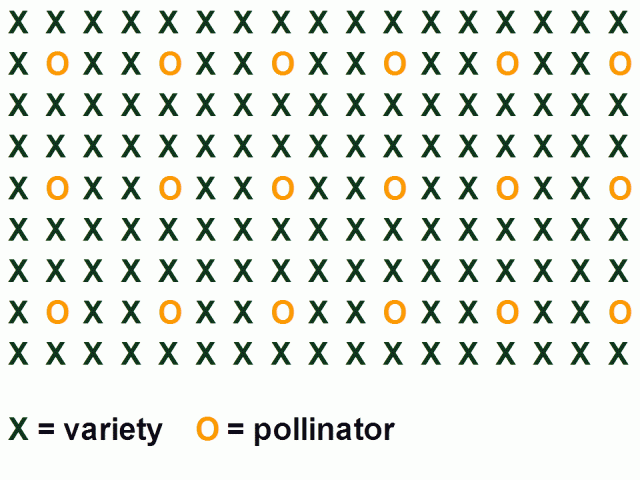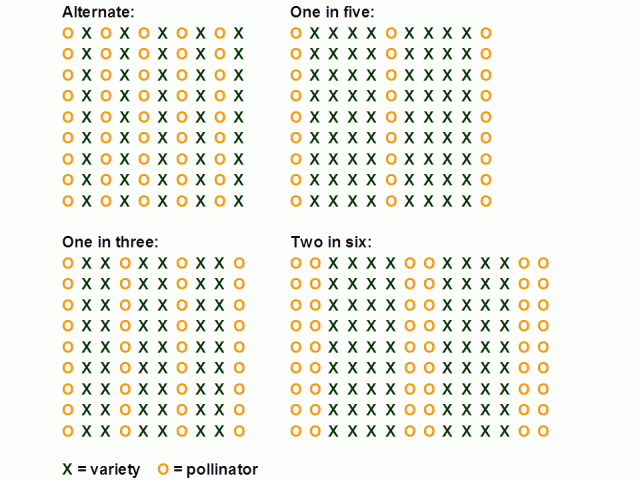Distribution of pollinisers
A number of options are available when incorporating pollinisers into the design of a new orchard. They can be included in the following ways:
One in nine method
This is where pollinisers are included as every third tree in every third row in both directions (Figure 2). This method insures that every tree is bordered by one polliniser tree.
Full row method
This is where full rows of polliniser varieties are planted next to the main variety. Some examples are: every second row, one row in three, one row in five or two rows in six (Figure 3). The number of rows between polliniser rows will largely depend on the orchard density, the number of bees working in the orchard and the crop-setting characteristics of the variety being pollinated.
If pollination is a problem in an existing block, consideration should be given to re-working pollinisers (to suitable apple varieties or crab apples) into the block using the one in nine method. Re-working is where a new variety is grafted on to existing trees. This can include grafting entire trees over to the polliniser variety, or simply adding limbs to existing trees, usually at the top.


